What is a Canon-Based Character?
I’m willing to bet that there’s a character out there that already has its hooks in you. Maybe they reside at Hogwarts, in a starship, or an endless battlefield. You don’t just want to watch their story from afar. You want to touch it, reshape it, see it in a new light. That’s where Canon-Based Characters come into play. They are the bridge between what exists and what you imagine, part familiar and part transformed.
In this guide, you’ll learn what CBCs are, how to design them, and how to let them grow without becoming simple copies. Canon is not a limit here. Rather, it’s soil rich with roots, waiting for your ideas to take hold.
Think of it this way: an OC is like planting a tree in fresh soil, separate from the forest. A CBC is a new branch sprouting from a tree already standing tall. It carries the same roots, but it stretches in a direction only you decide. (Plus, it’s already established in a forest of other characters!)
What do CBCs add to your creative experience?
So why make a CBC at all? The short answer is: because it’s fun. But there’s more to it than that. CBCs let you step into a world you already love, whether that’s Hogwarts, Gotham, or a favorite anime universe, without reinventing the wheel. You can save your energy for deep storylines rather than complicated worldbuilding. Or, if worldbuilding excites you, you can dig even deeper into the soil of an existing canon.
CBCs can also help you grow as a creator. When you try out new versions of canon characters, you practice seeing how their actions and friendships might change. For example, if you make a werewolf version of a character, they will face new problems, but their core personality will stay the same. A werewolf version of a character might face struggles with the full moon, keeping control, or hiding their secret from others. These new problems can shape their story, but the way they respond will still reflect the same core personality as the canon character.
One of the best reasons to try something new is the chance to learn from it. These lessons carry over into your original stories, giving you the skills to craft richer worlds and more nuanced characters. A CBC may begin as a reimagining, but the practice and confidence you gain can branch out into entirely original creations. Or if making something totally new just isn’t your thing, you’ll also learn how to make better and better CBCs as you create them.
They also work as practical exercises. Want to improve your dialogue? Drop your CBC into a scene with other canon characters and see how they interact. Do they clash, connect, or surprise each other? Want to refine character design? Then genderbend a character! You can play with essential elements like silhouette, general style, and more. It’s a fun way to stretch your skills while still staying rooted in a world you love.
Examples of CBCs
On CharacterHub, you can find lots of creative takes that show how flexible canon-based characters can be. Here are some great examples to spark your own ideas.

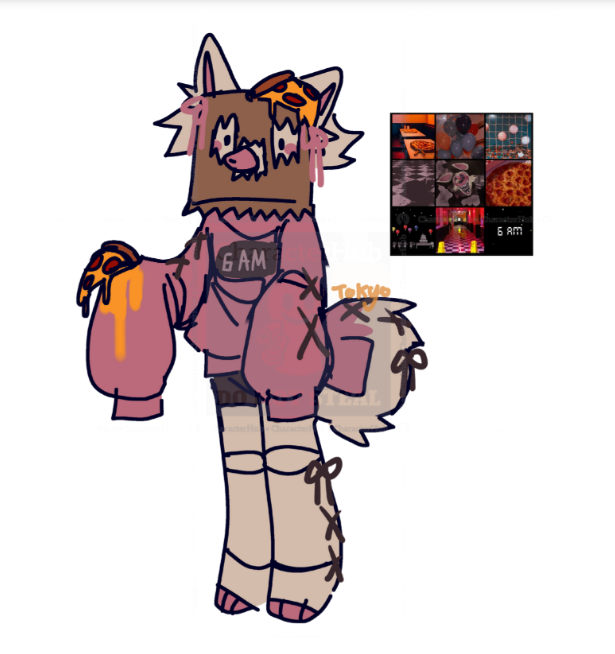
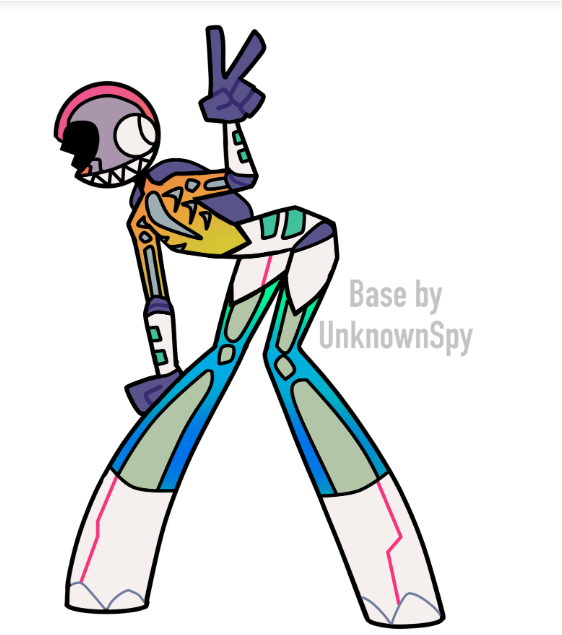
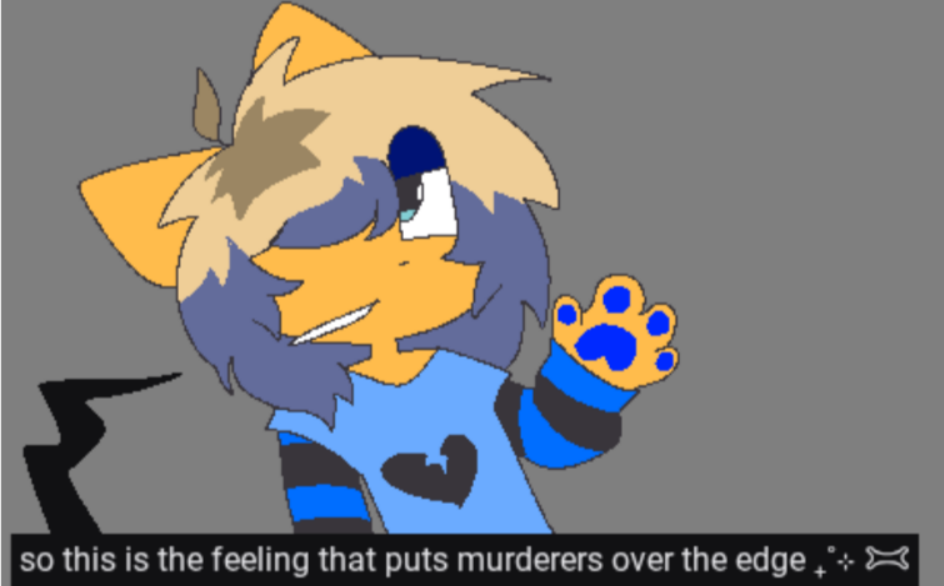
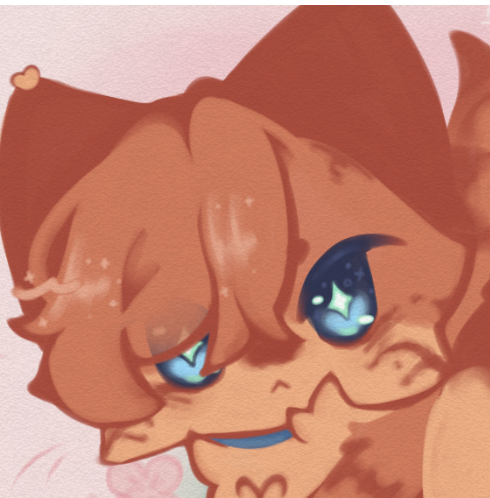
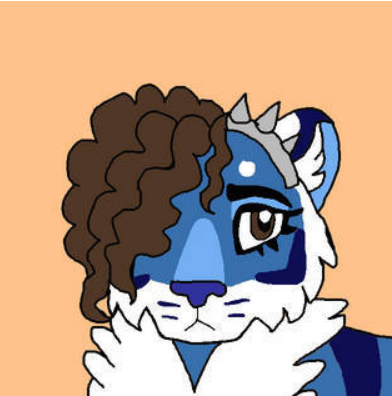
These are great examples of canon-based characters as each one is based off of a canon character from an established series. While this is the case, all of these characters are totally unique. Each of these characters proves that you can start with a canon base and still create something new and exciting!
How to Make a Good CBC
Making a CBC isn’t about copying canon. It’s about adding your own spark to a character you love. With a little balance, you can create a character who feels at home in their universe while still standing out as uniquely yours.
From Idea to Icon: Shaping Your CBC
Now that you know exactly what a CBC is, let’s talk about how to make one. Crafting a CBC is all about blending old and new. These tips will show you how to bring your spark to any canon character!
Respect the source, but add your own spin.
If your CBC bends the rules of canon too much, you might as well be making a totally original character. That’s fine, of course, but it misses the point of creating within a fandom. The fun of a CBC is getting to play with a character that already exists, not rewriting it from the ground up. Remember to make your character design fit in with the style of the source material, too!
Build a solid foundation.
Even though CBCs are built from canon characters, they still need depth to feel alive. If you can, give your reinterpretation a backstory, motivations, and quirks that make them more than just a copy. This part can be a little tricky for some CBCs. A CBC typically shares the exact same backstory as the canon character, adapted for any twists you give the character. Still, even an arguably minor change, like gender, can change events in a CBC’s story. To give your CBCs more depth, I encourage you to explore how any new elements can impact your character. For example a species-swapped character becomes stronger when you know why they act the way they do in your version.
If you’re not sure where to start, try a simple character design sheet or brainstorm sessions. How do you brainstorm, you may ask? First, name one clear goal in a single sentence. Set a timer for 10–15 minutes so you don’t overthink. Grab paper or open a blank doc. Write every idea fast and don’t judge them. (This is called free writing!) I If you stall, use simple prompts: who, where, why, or “what if?” When the timer ends, mark your top three ideas. Pick one and write the very next small step you will take to reach your goal. By the end of that, I guarantee you will be at least one step closer to creating something great!
Avoid Mary Sue pitfalls.
A “Mary Sue” is a character who seems a little…too perfect. They are often the most powerful, the smartest, and loved by everyone without much reason. A “too perfect” CBC doesn’t work for long. It makes the story flat. Instead, give them problems to face and traits that aren’t perfect. Let their actions bring both good and bad results. Let them make mistakes and face the results. This makes them more human and more fun to read about.
If you’re not sure if your character counts as a Mary Sue, take this quiz to check!
Think about relationships.
Your CBC will feel more alive when you consider how they connect to the other characters in their world. At this stage, decide whether your CBC stands alone or if the whole cast is affected by the change. For example, are you genderbending just one character? Or, has every character swapped genders? Relationships can change radically between these two situations, so choose carefully!
Ask yourself how your CBC interacts with other canon figures. Do they clash with them in new ways, maybe because of changes in personality, gender, or form? Do they learn from them? (This could bring out traits that the original character might never have shown!) Or do they compete with them? (This can lead to a playful or tense dynamic that adds new layers to familiar relationships.)
These connections root your CBC in the world of the original story. They show how your reimagining doesn’t just exist in isolation. Instead, it belongs within the larger web of interactions in the world. Relationships are what anchor your CBC to the soil of its source, while still letting it branch into something new.
You may think that CBCs are relegated to fanfictions, fan art, and fan works in general. And, in general, you’d be right. However, it’s important to remember that what you create can still make a real impact. Your art and writings impact people. They inspire, comfort, and are just plain fun to experience. So, continue to create!
If you are ready to share your CBCs, there are many good places to post them. Websites like DeviantArt, Tumblr, and AO3 have large groups of fans who love to see new takes on canon characters. You can also join fandom groups on social media or Discord servers to share your work. And of course, CharacterHub is a great choice! On CharacterHub, you can make profiles for your CBCs, join events, and connect with other creators. Sharing your work helps your CBC reach people who will enjoy it, instead of letting it stay hidden on your computer.
Balancing Canon and Creativity
Think of canon as scaffolding, not a cage. The source world gives you structure, but it doesn’t trap you. You can use it to explore side stories, minor characters, or moments left untold. The key is to keep it fun! CBCs don’t need to be perfect. (Actually, it’s better if they’re not!) It’s better to make something a little messy and creative than to hold back and make nothing at all.
Cannon-Based Characters on CharacterHub
What is CharacterHub?
CharacterHub is a creative platform built for sharing and exploring all kinds of original characters. (Including canon-based characters!) Plus, all the worlds that come with them, too. Each character gets their own profile. You can fill it with details like backstory, traits, relationships, images, moodboards, stats, and so much more! You can link characters together to show friendships, rivalries, or family ties. You’ll basically be building little networks that make your world feel alive. The site also makes it easy to browse other people’s characters, leave comments, be in competitions, and more. It’s the place to go to get inspired by different styles of design and storytelling! We offer both a showcase and a community, giving your characters a polished space to live. All while letting you connect with other creators who love the same things! Pretty great, huh?
Making a character profile is as easy as the click of a button. Literally! Let’s look at an example of a cool character profile.
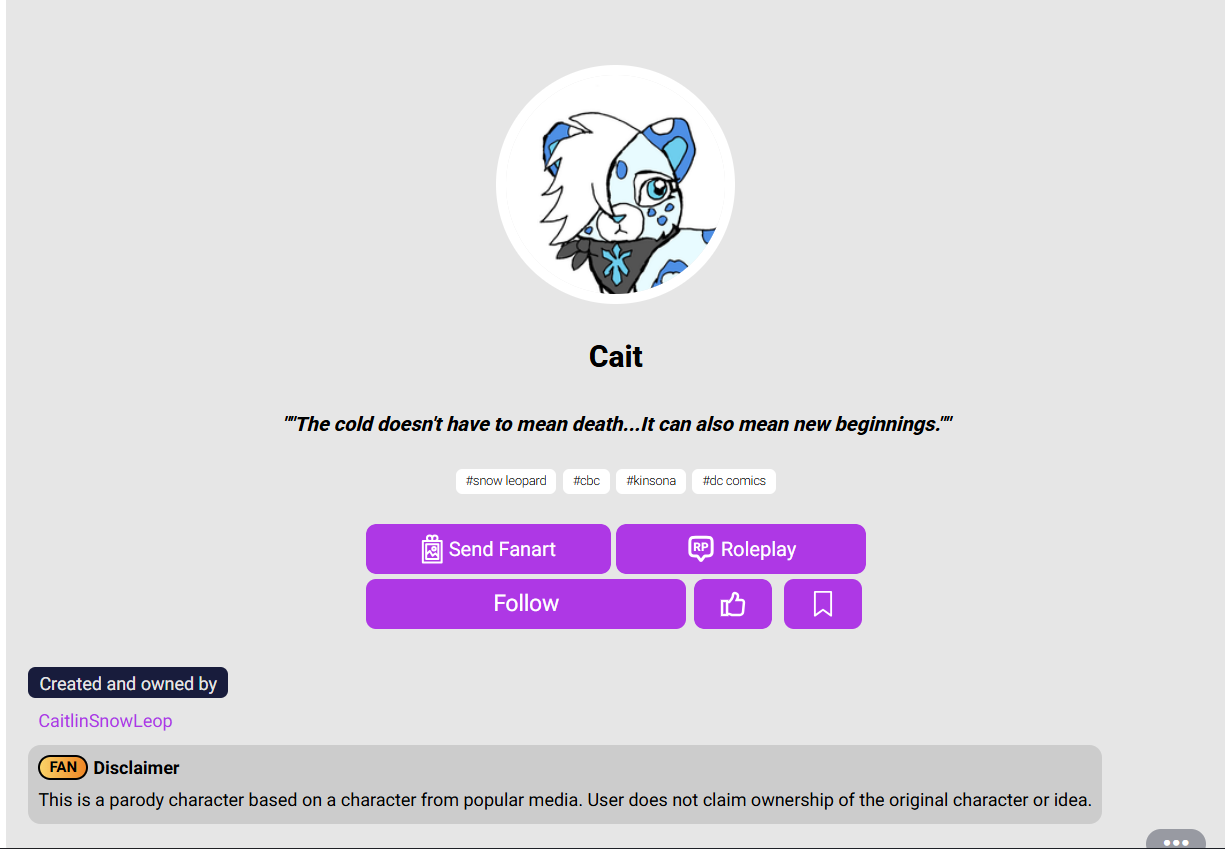

But wait, there’s more! CharacterHub doesn’t limit you with the same basic sections all character profiles come with. You can add on more pages to your character sheet, or keep it simple! It’s all up to what your creative goals are.
Now, onto the images! Here, you can post your own art of your OC. But guess what? So can other people in the community! Fanart is a huge thing here on CharacterHub, so don’t be shy!
This is just one example of what a great character profile can look like on CharacterHub. You have tons of options available to make your character sheet truly yours, so don’t feel limited by how others choose to decorate their pages! For example, you can make a DnD style character sheet, if that’s your thing. Basically, if you can dream it, you can do it on CharacterHub! So, get to clicking and filling out a character profile of your own. The community would love to see what you create!
Are Canon-Based Characters allowed on CharacterHub?
Yup, they sure are! CBCs are welcome on CharacterHub, with a few rules to keep in mind. (Psst…we’re a pretty welcoming community!) In fact, many creators already share amazing canon-based characters on the site. From fan takes on famous universes to fresh spins on minor lore, you can find it all there! CBCs have a place here right beside OCs, and the community celebrates both. There, you can participate in weekly events, find helpful prompts, or showcases where CBCs get the spotlight, so don’t hesitate to add yours to the mix!
CharacterHub’s Rules for CBCs
CharacterHub allows CBCs as long as they’re clearly labeled. This simple step helps others see which characters are canon-based and which are fully original. It keeps the community organized and easy to explore. Labeling isn’t about judgment. It’s just a way to make sure everyone understands where each character fits. So, let’s get to labeling!
How to Mark an OC as a CBC on CharacterHub
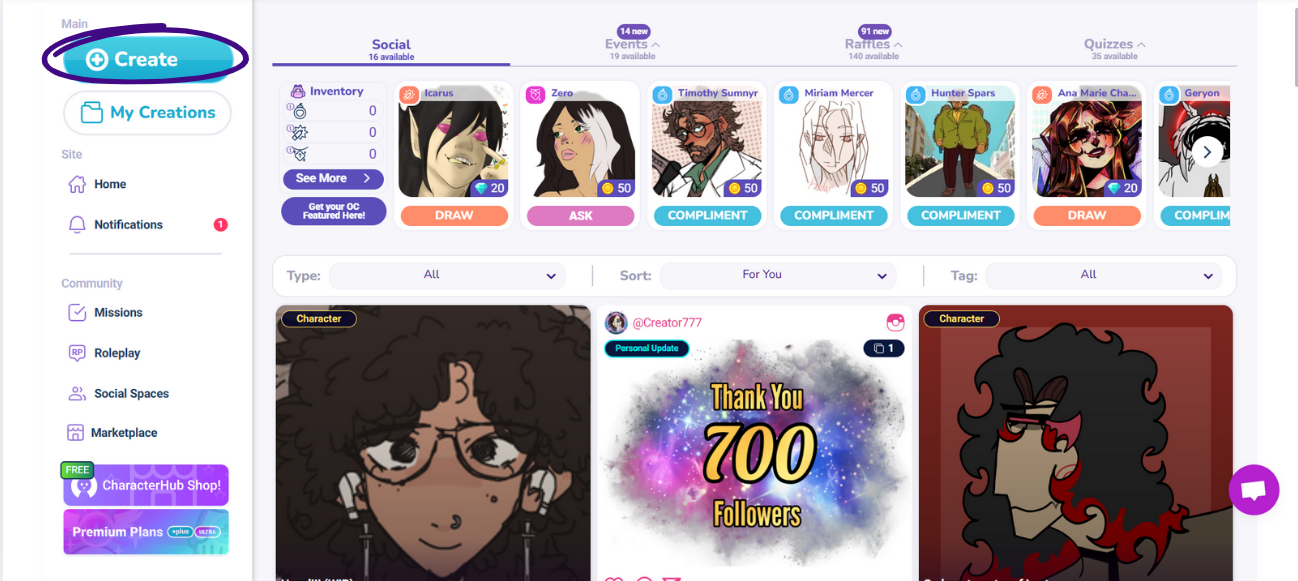
First, create a CharacterHub account to access CharacterHub’s home page, if you haven’t already. Click on the blue ‘create’ Icon to get started on logging your CBC.

Click on ‘Character’ to proceed to the character creation screen.
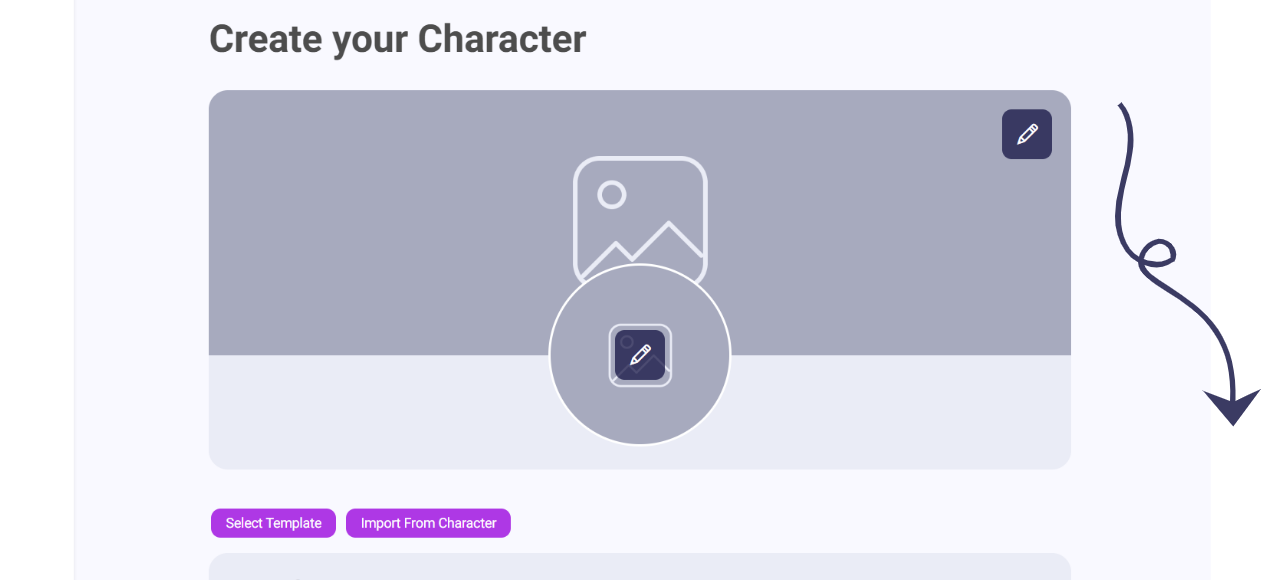
Upload photos of your OC and fill out the page as you like. Then, scroll down.
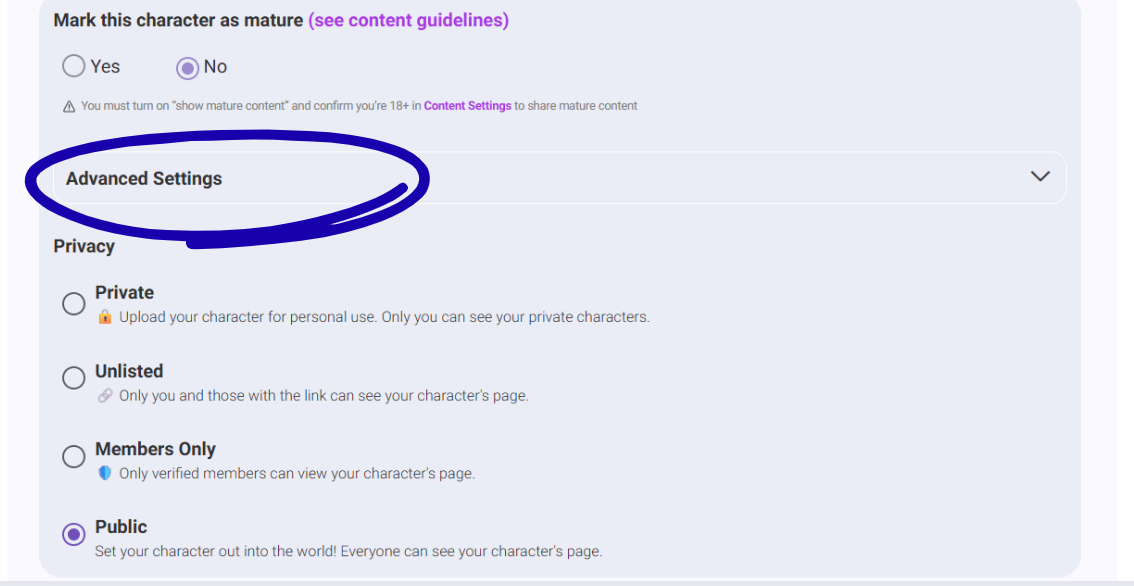
Navigate to ‘Advanced Settings’ and click on it to expand it.
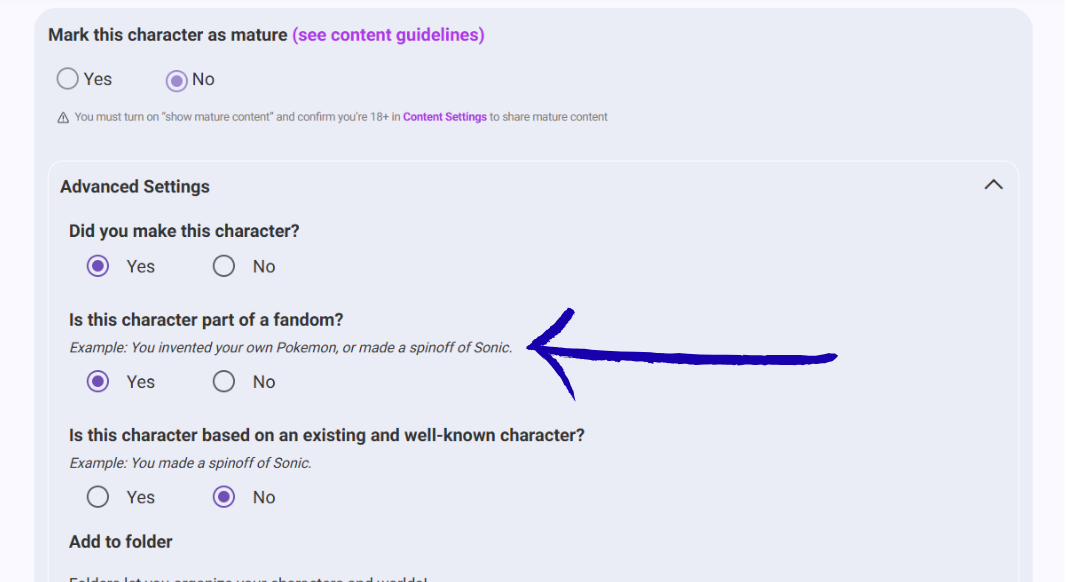
Finally, click ‘yes’ for the question “Is this character part of a fandom?” to indicate that your OC is a CBC. And that’s all, folks!
Wrapping It Up
CBCs open the door to worlds you already love while letting your creativity shine. They’re fun, flexible, and a great way to practice storytelling or roleplay. And the best part? You don’t have to keep them to yourself.
If you’re ready to bring your CBC to life, you’ve gotta check out CharacterHub. It’s the perfect place to build character profiles, organize your ideas, roleplay with friends, and share your creations with a welcoming community. You can even jump into weekly events, post fanart, or see your character featured in future articles. So why wait? Explore, create, and share your CBC on CharacterHub today!
%20(1).png)
Scarlett Bittle
With a pencil as her magic wand, Scarlett Bittle aims to spread the magic of creation to the world. She’s a multimedia artist, with experience experimenting with a spectacular spectrum of mediums. If you’re drawn to see more of her work, check it out on her instagram.
Find Out More
.png)


